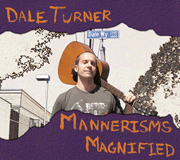
|
 |
|
|
|
|
|
In honor of the recently released Jeff Buckley Guitar Collection (which I was fortunate enough to have a hand in editing!), I've decided to add a “Jeff Buckley-Style Chords” lesson to this page!! This particular lesson revolves around a specific chord fingering Jeff Buckley uses in the chorus sections of “Lover, You Should've Come Over,” from his lone studio album, Grace. Obviously reducing a player of this magnitude's style to one measly chord does him a HUGE disservice, but at least it's a start! In later lessons, I *do* plan on creating similar lessons using other chordal approaches this magnificent guitarist/vocalist/songwriter favors... Make sure you read the section below, called about these chords, before you just let your fingers do the walking. These are kinda tricky!! And, as per usual, each example is matched up with an accompanying MP3 file. Make sure you listen to those too, to make sure you're “getting” how these shapes work. Meanwhile, if you've yet to check out his one-of-a-kind guitar/vocal book, race on over to Amazon.com's website and take a gander (link below): ***************************************** ***************************************** ABOUT THESE CHORDS: All of the chords below revolve around a three-note shape (notes fretted on strings 3, 4, and 6), with the 5th string muted, and the E and B strings allowed to ring throughout. The key to using these chords is having an awareness of all the notes used to create a particular scale (or the “legal” notes in the key you're playing), as they can be found along each string. This will make it possible to shift the shape along the designated string set, making physical adjustments to the shape so that the notes underneath your fret-hand fingers are always notes within the key/scale. It's no secret that Jeff Buckley was a fan of dropped and open tunings (Open-G in “Last Goodbye,” Open-? in “What Will You Say?,” etc.). One reason he may have favored voicings like those presented in this lesson is: Since these particular chord shapes are always used in conjunction with the open 1st and 2nd strings (ringing throughout), they provide an interesting means of creating the same jangly texture an open tuning affords, while tuned to standard (E-A-D-G-B-E)—“faking” the use of an open tuning, if you will. Who knows if this is one of the reasons he gravitated towards this sound, but it sure is usefu!. For what it's worth, I even used a couple voicings similar to this in a tune called “The Aftermath,” posted elsewhere on this site. (HERE is a link to the isolated acoustic guitar version, so you can hear them easily.) These chords are also great to use as spontaneous intros—using the shapes to noodle around, setting the scene for a tune in a related key. It's worth noting that, since the open E and B strings ring all over the place in these chords, the number of keys these shapes can be used is somewhat limited. Basically, the key of C (no sharps and flats) and most of the sharp keys—G major, D major, A major, E major, and B major—will work. All of their modally-related keys can be used too. For instance, in the key of C major, the same shapes may be used to imply A Aeolian, D Dorian, E Phrygian, etc. Lastly, if these chord frames are hard to read on your monitor, I apologize! Feel free to copy the TAB's jpg to your hard drive and print it out from there, so you can see the frames easier. Notice that underneath each chord name is the specific fret grabbed along the 6th string, used to create the chord (e.g., in the first “Cmaj13” chord below, the 8th fret of the 6th string is your targeted note). Also, note that only the rhythms of the chords are presented in each of the six figures below. The specific counting pattern is also included (underlined syllables inficate when you should strike the strings), so that you can get a better handle on the syncopation used, as is the specific direction (down/up) you should use your pick to strum. Hope you like!!! ***************************************** C MAJOR (C-D-E-F-G-A-B)
(*You can hear these chords by clicking HERE*) ***************************************** G MAJOR (G-A-B-C-D-E-F#)
(*You can hear these chords by clicking HERE*) ***************************************** D MAJOR (D-E-F#-G-A-B-C#)
(*You can hear these chords by clicking HERE*) ***************************************** A MAJOR (A-B-C#-D-E-F#-G#)
(*You can hear these chords by clicking HERE*) ***************************************** E MAJOR (E-F#-G#-A-B-C#-D#)
(*You can hear these chords by clicking HERE*) ***************************************** B MAJOR (B-C#-D#-E-F#-G#-A#)
(*You can hear these chords by clicking HERE*) *****************************************
To
help support this site's free online guitar lessons, please check out
my brand-new “full band” album of original compositions,
MANNERISMS
MAGNIFIED (now available through
CDBABY.com,
iTunes
and AMAZON.COM),
featuring me performing all the instruments (voices, guitar, bass, real
acoustic drums, piano, accordion, and mandolin). I also produced, arranged,
engineered, and did all the artwork/illustrations—intimate audio
AND visual, lol! (Details can be seen in my YouTube:
ALBUM PREVIEW/documentary.)
I’d love to hear your thoughts! Thank you :)
***************************************** © Dale Turner (2002) |
|
||
|
***
Click HERE for more of Dale Turner's PsYcHo
LiCkS! ***
|
|||
|
|
|||